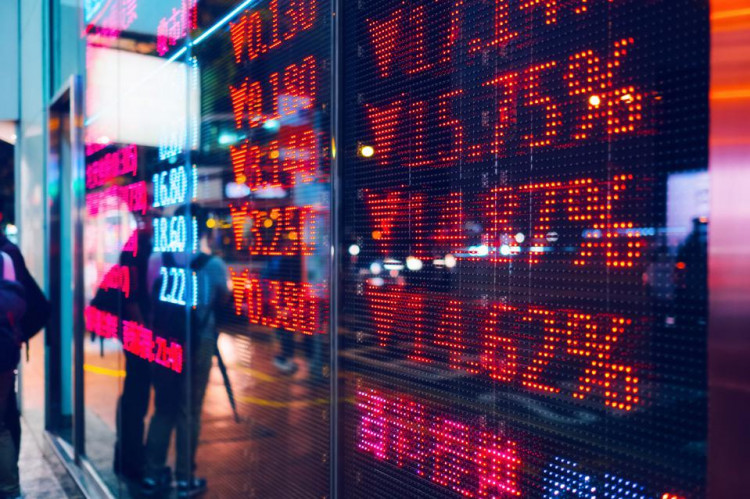The Difference Between Public & Private Companies
I’m starting here as it was my first misconception about the stock market I mentioned from when I was a kid. There are many types of ownership for companies, but on a very broad basis, we can break them into two groups: public companies and private companies.
Private Companies
Most companies in the world are private companies. These are companies that are owned by an individual, or small group of individuals, and ownership doesn’t change hands on a regular basis. Private companies run from very large, like Mars Candy (maker of M&Ms) to your local dry cleaner. If you wanted to buy a private company, you would have to approach the current owners directly and make an offer. If the company isn’t actively for sale, this would be difficult to do as private companies don’t release their financial results to the public. I mean, have you ever asked your dry cleaner how much he made in 2016?
Public Companies
Alternatively, a public company has some amount of its ownership available for sale, in very small pieces, to any individual, every single day via an open exchange. These companies have gone through an IPO (Initial Public Offering, discussed below) to put some percentage of their company up for the ‘public’ to purchase. To ensure that the owners of these small pieces of the company can see what the value of that small piece is, public companies are required to report financial statements every 3 months, aka quarterly, saying what happened during the past 3 months and how they did.
Definition of a Stock & the Stock Market
A stock is the money (capital) that a company raises by selling shares of its ownership to the public. The total value of a stock is also known as its market cap, or the price of a single share multiplied by the total number of existing shares. A single stock has millions of individual shares, which are tiny pieces of ownership in the corporation.
For instance, today the stock of Amazon consists of 477 million shares, priced at $853.42 each. This means the total value of the stock, or the market cap, is $407 billion dollars.
The stock market is the group of all publicly traded companies in the world. As the world has become more interconnected, the global stock market has started to move together more than ever. A crash in China causes declines in Europe and the US. The UK deciding to leave the EU causes panic in US markets. If you choose to own individual stocks, you could very well see your holding drop by 20% because of something that happened halfway around the world.
How Stocks Trade
Stocks trade on exchanges. The two biggest stock market exchanges in the US are the New York
Trading floor at the NYSE
Stock Exchange (NYSE) and the National Association of Securities Dealers Automated Quotations (NASDAQ). When you see photos of swarms of people trading stocks and commodities, that is likely the NYSE. The NASDAQ was the first electronic exchange where investors could buy and sell stock.
The NYSE was founded in 1792 with 24 brokers (people who match buyers with sellers) and merchants as a place to buy and sell stock. Prior to this development, brokers would meet unofficially to trade stock. The growth of the NYSE and other exchanges allowed for regulation to develop to protect consumers. With official exchange brokers, consumers could be sure they were buying legitimate shares of a company and for the proper market price.
Who are you buying stock from?
Outside of the first time companies offer shares of their stock, you aren’t buying shares from or selling shares to the actual company. Instead, you are transacting with another individual. Most large companies have stock that trades almost constantly, which means when you want to buy or sell, there will likely be a seller or buyer that the exchange can quickly match you to.
IPOs and Why Companies Issue Shares
An IPO, or initial public offering, is the first time a company offers shares of ownership to the public via open exchanges. This happens when a large private company, for instance, Snap Inc (the company that owns SnapChat), has an owner that wants to sell some of his or her ownership of the company to raise cash.
IPO for company growth
Possibly the most common reason you see a company IPO is that they need capital to grow the business. They need a new manufacturing plant, or to invest in a new technology, and the owners are willing to sell some of their shares to the public to get the cash the business needs.
In this case, even though the owners are reducing the percentage of the business that they own, they don’t personally get much, if any, cash out of the IPO process.
IPO for owner benefit
Alternatively, if a private company is doing well and the owner believes the public may be interested in buying some of the company, they could sell a piece of the business to diversify their own investments. The owner has the option to offer to the public only some of the ownership, say 45%, so that they can maintain full control no matter who goes out and buys their stock. This lets the owner take some cash out of the business, puts a real, trackable value to their remaining ownership, and allows owners an avenue to sell more shares in the future.
How to Buy Stocks
With the advent of the internet and electronic trading, there are a lot of options for individuals to buy stocks without having a human broker. Today, you need an online brokerage account that is set up to buy and sell individual stocks. You want to look for sites with low transaction fees if you are going to be trading on a regular basis (I very much do not recommend this – see point 10 below). Sites like E-Trade, Fidelity, Vanguard, and many others offer online brokerage accounts.
When you go to purchase or sell stocks, there are more options available than buy now and sell now. Below are some details on what your order type choices mean when looking at your online account. A representative at your online brokerage can also help you with any questions.
- Market Order: Your buy or sell order will be completed as soon as possible after you submit it, at wherever price the stock happens to be trading at that moment.
- Limit Order: This type of order tells the system to buy stock at a certain price or better. For instance, Snap Inc is trading at $19.89 per share today. Let’s say you wanted to buy Snap, but not unless you could buy it for $18 or cheaper. You can put in a limit order for 10 shares, to be completed if and when the value of the shares falls below $18. If it never does, the order doesn’t cost you anything.
- Stop Loss Order: This is an order to sell when a stock hits a certain price or lower. This type of order is used to protect yourself from too much downside. For instance, if you bought a stock at $10 and it rose to $15, you may not want to sell if you still think it could go to $20. So, to protect the money you’ve already made, you can place a stop loss order at $14. If you are wrong, and the stock falls instead of rises, the system will automatically sell at $14 and protect your $4 per share gain.
- Stop Limit Order: This is an order to sell when a stock hits a certain price or higher. This is the mirror of a stop loss order, in that you use this order to lock in your upside. Using the same example of the stock above, let’s say when you place your stop loss order for $14, you also think about how happy you would be if the stock ever hit $20. At $20 you would also be very worried about the price coming back down. If that was the case, you could also place a stop limit order at $20, which would tell your brokerage to sell your shares if the price got to $20 or higher.
Basics of Valuing a Stock
The value of a stock, or its total market cap, is a representation of what investors believe the equity value of the business is. Equity is an accounting term for the value left to owners after subtracting liabilities (bills, debt) from assets (cash, property). The complicating factor is that the accounting version of equity doesn’t take into account how well the company’s assets generate profit. A million-dollar home doesn’t generate profit at all, but a million-dollar parking garage might generate millions in profit. An accountant values both as $1 million assets, but an investor might be willing to pay more than $1 million for the parking garage to benefit from the profits.
Top Valuation Methods
- P/E (Price / Earnings): The P/E ratio takes the price of the stock, divided by net income per share. Historically, the average P/E of the market has been 15x-25x.
- DCF (Discounted Cash Flows): The DCF method is used to approximate the current value of all future cash a company will generate, and then divide by the number of shares. This is typically a method used for large, stable companies that aren’t growing rapidly.
How People Make Money in Stocks
There are two main ways people make money in stocks. Price appreciation and dividends.
Price appreciation usually happens when the company you own shares in continues to improve in performance and the market is willing to pay more for those shares. In the short term, you can see rapid price appreciation in a stock from news items that might affect the company. For instance, when Donald Trump won the Presidency and was discussing a potential $1 trillion infrastructure spending plan, all the companies that work on infrastructure saw massive growth. However, none of those companies have seen any actual earnings growth yet.
The way most people make money in stocks is by buying and holding for a long time. There are very few people who can make money trading stocks day to day. Day trading is much more like gambling than investing and I don’t recommend it for individuals.
Bull and Bear Markets
The stock market, like the economy, works in cycles. There are periods of growth and periods of decline. However, over the long-term, the stock market has always rebounded from downturns and grown to surpass its prior highs.
A bull market is when companies are growing, investors are excited and buying stocks, and the market is increasing in value.
Stock market investors can get bucked off just like bull riders!
The US has been in a multi-year bull market recently, with values surpassing historic highs in the last year. While this has been great for American’s retirement funds, it has left a lot of professional investors wondering when the next downturn will come.
A bear market is the opposite of a bull market. Here investors are selling stocks and the market is in a decline. The last bear market the US saw was in 2008-2009 during the Great Recession. This downturn was the most severe the market had seen since the Great Depression, though the market rebounded relatively quickly.
The Dow, S&P 500, and Other Indices
You may have seen headlines in the past few months stating that the Dow had hit record highs. If you didn’t know, this was not referring to the Dow Chemical Company. The Dow, or Dow Jones Industrial Average (DIJA), is one of the most quoted stock indexes in the US market.
A stock index is a group of public companies that are used to approximate the performance of the entire market or of a specific subset of the market. The Dow includes 30 very large public companies, that are no longer specifically industrial companies. It is the oldest index in the US (created in 1885). The companies in the index have changed over time to reflect the most relevant companies. However, while the Dow is often quoted in the news, investors question its relevance given the thousands of companies in the market and the Dow’s very small sample size of 30.
The other commonly quoted index is the S&P 500. As you could easily guess, this index has 500 US companies that it tracks. The S&P offers more diversity than the Dow, but still includes very large companies that don’t necessarily trade like their smaller, less known brethren.
Why Most People Shouldn’t Buy Individual Stocks
Buying and selling individual stocks for a profit is very, very hard. It requires deep knowledge of the companies you are investing in, solid timing of the market, and a lot of cool-headed patience. The fact is that some of the best professional money managers are only right 55%-60% of the time. These money managers make a good return by owning hundreds of different companies and more than offsetting their losses with their wins. Even then, most money managers won’t outpace a cheap, simple index fund in the long-term.






